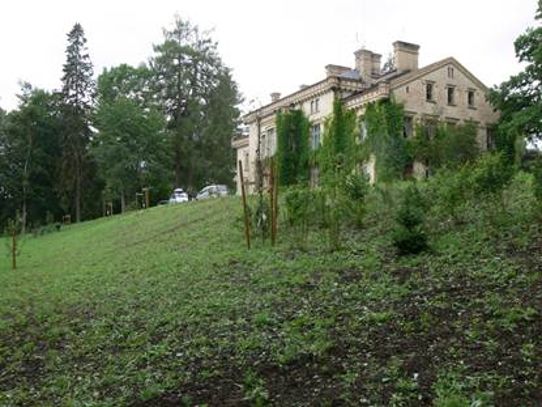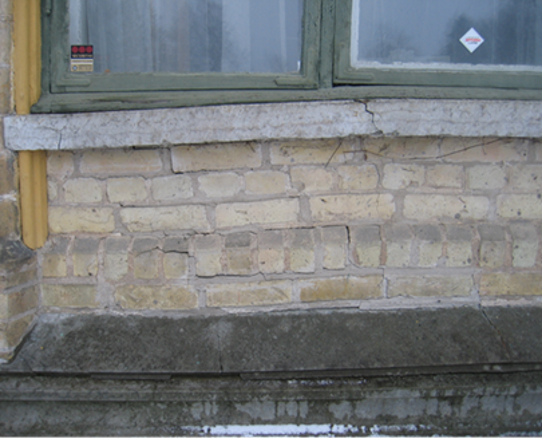Höglunda Manor is near Edsvalla by the river Norsälven, just outside of Karlstad in Värmland. For many years, the manor has been suffering from subsidence and is constantly at risk of sliding down into the river as a result of the ground’s instability. The increased precipitation that climate change is presumed to result in will affect the groundwater level and variations in the level will increase. This has an impact on the stability of the ground.

Protected historic building Höglunda Manor
The building is a protected historic building, which means that it is in our interests to preserve the building and ensure it survives for future generations to enjoy. The property is built on top of a grillage. A grillage is a foundation that consists of crossing and butted wooden beams and is often used as the foundations where the ground is damp and unstable. The grillage has to lie below the groundwater level in order to prevent the wooden material coming into contact with oxygen and starting to decompose. When the groundwater level varies, the grillage decomposes and the building subsides.

The ground around Höglunda Manor consists of an upper layer of sand and silt with clay underneath. This means that the land on which the building is constructed is unstable and is at risk of sliding into the river.
Foundation reinforcement
The initiative to restore the manor, fix the subsidence and prevent the building sliding into the river was initiated jointly by the property’s owners and the county custodian of antiquities. A reinforcement of the building’s foundations has been undertaken using beams. So when the grillage decomposes, the building’s weight will be transferred to the beams. Earth has also been removed and an embankment-like terrace has been built alongside the river in order to reduce the risk of a landslide.
Financing
The work was estimated to be completed in 2014 and at that time the cost of stabilising the foundations was estimated at approximately SEK 6 000 000. The property owners, the county administrative board and the Swedish National Heritage Board are the actors who have been involved in financing the works. Construction of the terrace cost SEK 870 000, financed by the then Swedish Rescue Services Agency, the property owners and the municipality.
More examples of climate adaptation
This is one of many examples of climate adaptation. There are more in the collection of ideas being built up by the Swedish National Knowledge Centre for Climate Change Adaptation at the Swedish Meteorological and Hydrological Institute (SMHI). The collection of examples has the aim of sharing experiences and providing ideas to everyone who works with climate adaptation. Examples describe concrete measures and challenges in several subject areas. They show how different actors have worked to adapt their activities to the climate changes that are already being noticed today and those that we cannot prevent in the future.